Among the diseases of the musculoskeletal system, osteoarthrosis is a frequency leader.It is believed that the vast majority of the population of the planet at the age of 60 has the initial signs of changes in articular cartilage, and 14% already have manifestations of osteoarthrosis.The most common version of this disease is osteoarthrosis of the knee joints.
However, "osteoarthritis" or "arthritis"?
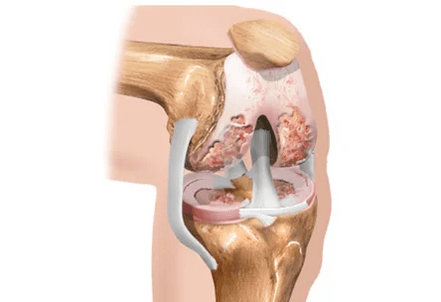
Do not mix these two concepts.Arthrosis is the mainly modification process of the structure of the joints, and arthritis is an inflammation which could occur both in the context of the "intact" structure and in the context of osteoarthritis.
The changes in the bone with osteoarthritis can be compared, for example, with growths made on a tree trunk, which approaches the concrete fence and exerts pressure on this fence with all its weight.
Normally, the surface of the bones facing the other is separated by two layers of cartilage and meniscus (additional cartilage plates).In addition to the role of the "buffer" between the bones, the cartilage provides the slide of the bones and the mechanical correspondence with each other.The meniscus, which, due to large or small (but frequent) injuries, and also loses their elasticity, can break completely or partially even more.
With age, and especially in the presence of a hereditary predisposition, joint cartilage is thinner.This is why the bones of the hips and the lower legs, which make up the knee joint with their ends, approach dangerously, the friction can even occur between them.
Usually, in parallel with the slimming of the cartilage over the years, another unpleasant event occurs: the amount of intra-articular liquid decreases.This liquid is not only a purely mechanical "lubrication" of the interior joint.It provides nutrition of bones, menisci and articular cartilage.The violation of the "supply" of all these structures is a real disaster for the articulation!
If there is a physical overload of the joint, then the bone growths appear on the surfaces of the bones and begin to develop, more similar to the scoring or the tips.For the knee joint, these overloads will be the lifting of the weights (including the overweight of your own body!), Physical work by emphasizing the knees (for example, by weeding the garden), a constant walk on the stairs, by running, by wearing uncomfortable shoes, flat feet and many others.Now, it is easy to imagine what is happening inside the knee joint when developing osteoarthritis and the way it manifests itself.
How does the joint work?
Each of us has seen the articular cartilage several times at the end, for example, the chicken bone.It covers small contact areas.Under the articular cartilage is a subchondral or pericized bone.The human musculoskeletal system is organized in a similar way.
Most of the person's joints consist of bone, synovial shell (joint) and intra-articular fluid.
What happens to joint with osteoarthritis?
Under the influence of all the charges that have already been mentioned, there is a compaction and growth of the thin bone, as a result of this, an increase in the trauma of joint cartilage.
The products of the cartilage cartridge formed due to the microtraumate fall into the synovial fluid.It is thus organized by nature that they are foreign substances for the synovial shell and cause its inflammation.The formation of synovial fluid is disturbed, which is generally a kind of "conveyor", similar to a continuous cycle of enrichment and blood purification.In addition, joint fluid becomes lower than hyaluronic acid.It is worth talking about this acid.
Hyaluronic acid provides the viscosity of the synovial fluid, creates "the buffer effect" and the "lubrication effect" between bones, reducing their friction against each other.It is thanks to this substance that the articular liquid in consistency resembles egg proteins, not water.Another important role in hyaluronic acid is to ensure the delivery of articular fluid nutrients deeply in the articular cartilage, because there is nowhere where there is nutrition: blood vessels are not directly suitable for cartilage.In the same way, the "spent" substances of the cartilage in the joint fluid are eliminated: using hyaluronic acid molecules.
Thus, an improved bone seal occurs and unbearable conditions are created for joint cartilage.
Cartilage receives a signal to adapt to these extreme conditions, and its change begins, in another way, it is called reshaping.This is mainly manifested by a decrease in the elasticity of cartilage.
At the late stage of the development of osteoarthritis, the bone becomes rigid, but at the same time more fragile, the cartilage itself is partially imbued with calcium.
Symptoms
The development of osteoarthritis begins with slight pain in the knee, appearing after walking the stairs, physical activity, long walking.Such light pain may appear for several months, even years.Then they become more pronounced.At the initial stage of the development of the disease, the knee bones are not deformed, but a slight swelling of the joint itself can be observed.
In the second stage in the development of the disease, pain becomes more intense and occurs after a slight load.In addition to the pain, a crunch appears in the knee joint, which differs from the usual sweet abuse of a healthy joint with pain.In addition, the deformation of the joint becomes perceptible, the bones of touch become wider and coarse.Bringing the knee to more than 90 degrees becomes problematic.
In the third stage of the disease, knee pain becomes severe and constant, not even passing even during the rest period.Knee mobility becomes minimal, often it does not fold more than 90 degrees and does not extend until the end.The deformation of the bones of the joint becomes so strong that there is a valgus (X -shaped) or variability (O -shaped) curvature of the legs.
Diagnosis
Inspection
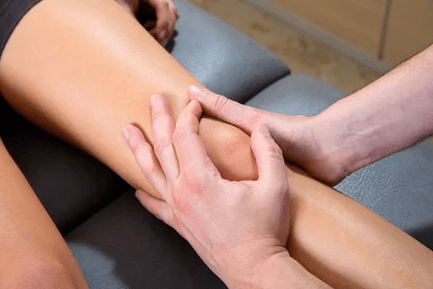
In the early stages of the disease, the joint is not changed, mobile, the muscles that surround it are preserved and quite strong.It is only by palpation (pressure) of certain points, more often on the inner surface of the joint, is a determined local (local) pain.The doctor asks the patient to carry out several squats, to look, to straighten his leg to the knee, to put his face on the sofa and to drive himself flexion extensions (this is called "passive" movements).In this case, in addition to the pain and the limitation of the volume of movements, you can determine the crunch, by clicking on the joints.With a pronounced inflammatory component, the joint is increased in size, it seems that it is "inflated" with liquid.With a process of high provision, flexion in the knee can be partially or completely absent, when examined, the surface of the articulation seems unequal, tuberous, the member can be curved (displacement of the axis of the limb, "evoked").
Laboratory and instrumental search
- The compulsory laboratory survey program includesGeneral, biochemical and immunological blood tests, urine analysis.In the general blood test, attention will be paid: the increase in the level of leukocytes and the increase in the rate of regulation of erythrocytes, which indicates inflammation.In the biochemical analysis of blood, metabolic metabolic indicators are important, the level of "hepatic" enzymes.In immunological analysis, the presence or absence of signs of systemic inflammation will be determined - this is highlighted by the level of C -reactive protein.Urine analysis will reveal the "sand" acid crystal content.
- Synovial fluid analysis (joint)It is prescribed in the event that this liquid is in sufficient quantity.In other words, when the joint is swollen, swollen.Under the conditions of compliance with sterility, the doctor pierces the joint capsule in a strictly defined place, inserts the splug into the joint cavity, then eliminates excess liquid.Part of the material obtained enters the laboratory for analysis.At the end of the procedure, the anti-inflammatory drug of the glucocorticosteroid group is most often administered in the joint cavity (for example, Diprospan).
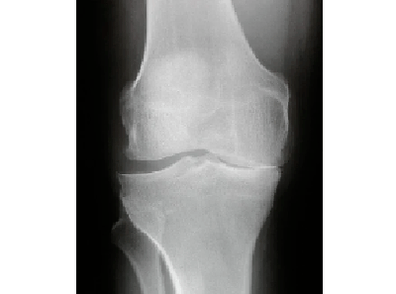 radiography.An image of the two knee joints is compulsory, which is necessary to compare a sick knee with a sick knee.In the image, attention is paid to the width of the joint difference (it is judged by the state of the meniscus and cartilage), the presence or absence of bone-dosteophytes, signs of destruction (destruction) of bone.
radiography.An image of the two knee joints is compulsory, which is necessary to compare a sick knee with a sick knee.In the image, attention is paid to the width of the joint difference (it is judged by the state of the meniscus and cartilage), the presence or absence of bone-dosteophytes, signs of destruction (destruction) of bone.- Knee joint ultrasoundHe will answer questions about the preservation of the meniscus, the presence of a baker's cyst, the severity of inflammation, the presence or absence of uric acid crystals (in the presence of gout).
- MRI (magnetic resonance imaging).This study is prescribed if an ultrasound does not give an exhaustive answer to the questions of a specialist.MRI is mandatory for patients who plan to carry out an arthroscopy.
- Arthroscopy.Allows you to visualize, that is to say, personally assess the state of the joint.The method is essential for controversial diagnoses, the suspicion of traumatic damage to meniscus and ligaments (then directly during the study, it is possible to quickly eliminate the meniscus or the torn ligaments).
Treatment of osteoarthritis of the knee joint
The principles of complete treatment must be followed, in particular:
- Detailed patient consciousness on the disease
- The use of physiotherapy exercises, which includes: specific exercises for joints in a lie, swimming
- Maintain optimal body weight
- Wear an orthosis (soft bandage or at least an elastic bandage) during an increased load on the joint - on the road, during a walk, etc.
- Non -kerative methods (physiotherapy).This type of treatment gives excellent results precisely with osteoarthritis of the knee joint (gonarthrosis).Apparently, this is due to the fact that the joint is available for the influence of factors such as magnetic and laser radiation.To treat the knee joint, you can use magnetic currents, UHF, cryo-exhibition (translated from Greek means the effect of cold).Physiotherapeutic procedures are widespread, processing courses are generally short - 10, maximum sessions per day or every two days.We should only remember possible contraindications, which include tumor processes, diseases of the thyroid gland and pelvic organs, as well as systemic inflammatory diseases (autoimmunes).
- Drug therapy.
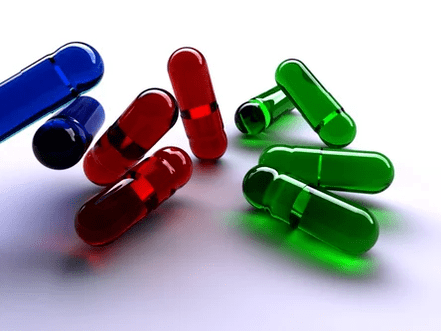
Principles of osteoarthritis therapy:
- Relieve pain
- delay additional destruction of joint structures
- Restore the lost joint function.
Non-steroidal anti-inflammatory drugs
For pain relief, the drugs of NSAID NSAIDs - non -steroidal anti -inflammatory drugs are used.They are used in and in the form of applications (application on the skin).Applications (local therapy) are a very effective method, especially with regard to the first stages of the disease.Before using a gel or cream containing NSAIDs, it is necessary to ensure that there are no changes on the skin, whether it is a rash, pustules or cracks.The general rule of local treatment is to use the cream or frost selected at least twice a day, and if unpleasant sensations occur - cancel the complete disappearance of these manifestations.The intramuscular administration of pain relievers is currently not recommended, as the risk of side effects due to the administration using a syringe does not decrease, but rather the reverse.In the case of pronounced inflammation, the accumulation of a large amount of intra-articular glucocorticosteroid fluid drugs is authorized, but it should be noted that this procedure should not be carried out more than once every 3 months.
Chondroprotector
An anti-inflammatory effect higher "step" with osteoarthritis is chondroitin or glucosamine preparations.They, like NSAIDs, fight with inflammation in the thin joint structures, but have fewer side effects and, above all, retain their anti-inflammatory effect several months after cancellation.
Chondroprotectors are a collective name for a group of drugs containing chondroitin sulfate and glucosamine - "construction bricks" of cartilage at the same time.Despite the apparent treatment at high cost with chondroprotectors, their convenience for patients and efficiency are difficult to overestimate.First, these substances, accepted inside, are perfectly absorbed by the stomach, and the losses of the drug "along the road" to the cartilage are minimal.Second, they are able to remove inflammation in the joint and, moreover, reliably slow down the process of destruction of joint cartilage!Most often, these are prescribed courses, because they have a fairly long "ace" which lasts several months, and sometimes even up to six months.
Hyaluronic acid drugs are hyaluronates if called.These funds are sold in the form of syringes prepared for intra-articular administration.Hyaluronets are an artificial synovial liquid.The effect of treatment with this method can last up to 12 months.
Surgical treatment of osteoarthritis of the knee joint
As with osteoarthritis of the hip joints, in the case of serious changes and loss of persistent function, this is the operation.With gonarthrosis, two types of interventions are currently carried out: arthrodesis (immobile compound) and endoprothetics.The first operation is rarely carried out, according to special indications, when the installation of an endoprosthesis is impossible for any reason.The result of this operation is that the knee becomes motionless.But it doesn't hurt.The endoprothetics operation is much more profitable in terms of function.Recall that with significant body weight, this operation is not carried out - the risk of complications in the postoperative period is too important.From the time of the elimination of damaged sections of the joint and the installation of the prosthesis until the function is completely restored, no more than three weeks.
How can ridiculous osteoarthrosis threaten?
Over time, osteoarthrosis does not come back, but only aggravates, especially while maintaining provocation factors.Consider the main sources of danger to the health and life of a patient with osteoarthritis.
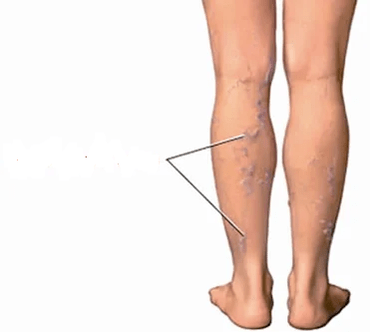
- Chronic pain of various intensities- A very important risk factor, especially in the elderly.Constantly proven unpleasant sensations can cause sleep disorders, a background reduced in mood and even depression.It is difficult to predict which chain of undesirable events draws the phenomena listed.
- Veins pathology.Constant inflammation in the knee area, the growth of bone-dosteophyte episses, which can mechanically injure popliteal vessels, can lead to the development or progression of the veins of the veins of the legs.Sometimes the orthopedists refuse to make the knees work until the varicose nodes are removed, but phlebologists (veins specialists) do not start surgery in the veins until there are changes pronounced in the knee joints.
- Function of reduced limbs.With a process of high provision, the articulation can completely lose the ability to move, and this, in most cases, is a sign of disability.
- involvement of other joints.We have already discovered how such an apparently ordinary phenomenon, like flat feet, can "draw" knee joint and lead to the development of osteoarthrosis.In the same way - along the chain - there is an involvement in the painful process of the knee joint on the opposite side.If the patient neglects the recommendations, refuses to wear a rod, preferring to "beaten on his two", osteoarthritis of the hip joints is developing fairly soon.The legs are twisted, the process becomes a "duck".
- immobility.This serious complication of the disease occurs in cases where the bones of the joint are strongly destroyed, there is no cartilage, the movement in the joint is strongly painful or impossible at all due to the fusion (this is called "ankylosis") of the bones with each other.In this situation, only surgery can help the patient, but only if it is technically possible.Viainia is dangerous in the general sense: it causes obesity, osteoporosis, muscle atrophy, rapid development of internal organ disease.In addition, a immobilized person, of course, constantly needs to take care of himself.
- Inoperability.Unfortunately, there are a certain number of states that make the operation impossible, and one of them is by far, an osteoarthritis "neglected" in patients with more than 80 people with linked diseases.
Prevention
- Exclude joint injuries.It would seem: there is nothing easier.For a while, abandon the jumps, run, walk on the stairs, dance, high heels is not at all difficult.In practice, it turns out that it is this point that causes the most protests from patients.A person, if they suffer recently, is generally not ready for the fact that an important point in their daily life will be missed.But if you do not follow these tips, there is a danger of rapid decrease in quality of life and disability.
- Reducing weight and keeping it within optimal limits is an extremely important recommendation!No matter how much the effect or this miraculous tool, large people will not be able to appreciate it.Because if the joints are overweight, microtraumas are repeated daily.This can reduce all efforts for "no".In addition, for certain treatment methods, obesity is a direct contraindication.
- Walking with support.The universal rule to unload the joint using the support is as follows: a cane, a crutch or a handrail must be in the opposite hand to the affected limb.In other words, if the right knee hurts, the cane must be maintained on the left, and vice versa.
- Correction of flat feet.It seems, how can the flat feet and osteoarthritis of the knee joint be connected?It turns out directly.If the foot is poorly installed (now we are talking about longitudinal or mixed flat feet, not transversal), the load is redistributed in the knee joint.In this case, the gravity of the body with a stage does not fall in the center of the joint, but on the right or on the left.Consequently, the right or left meniscus suffers more, and as he suffers more, we use faster.Then comes the "queue" of joint cartilage where the meniscus cannot face its function.This process ends with the formation of typical changes of "arthosis" to a factor with a factor with a slope with a slope to a factor with a knee actor (the appearance of bone growths).





































